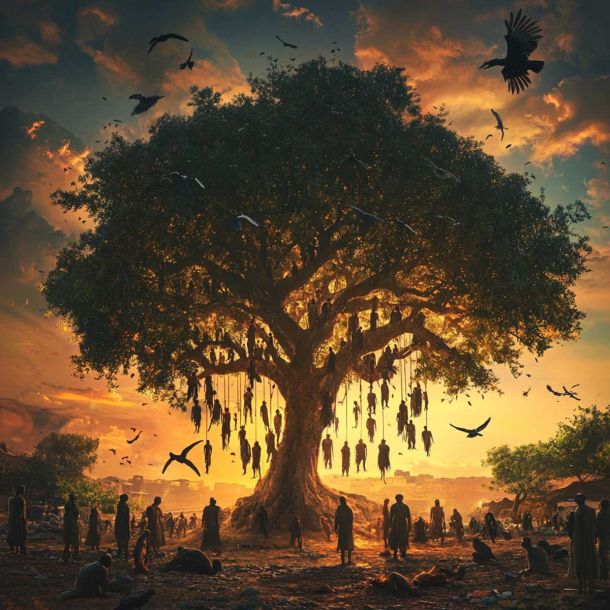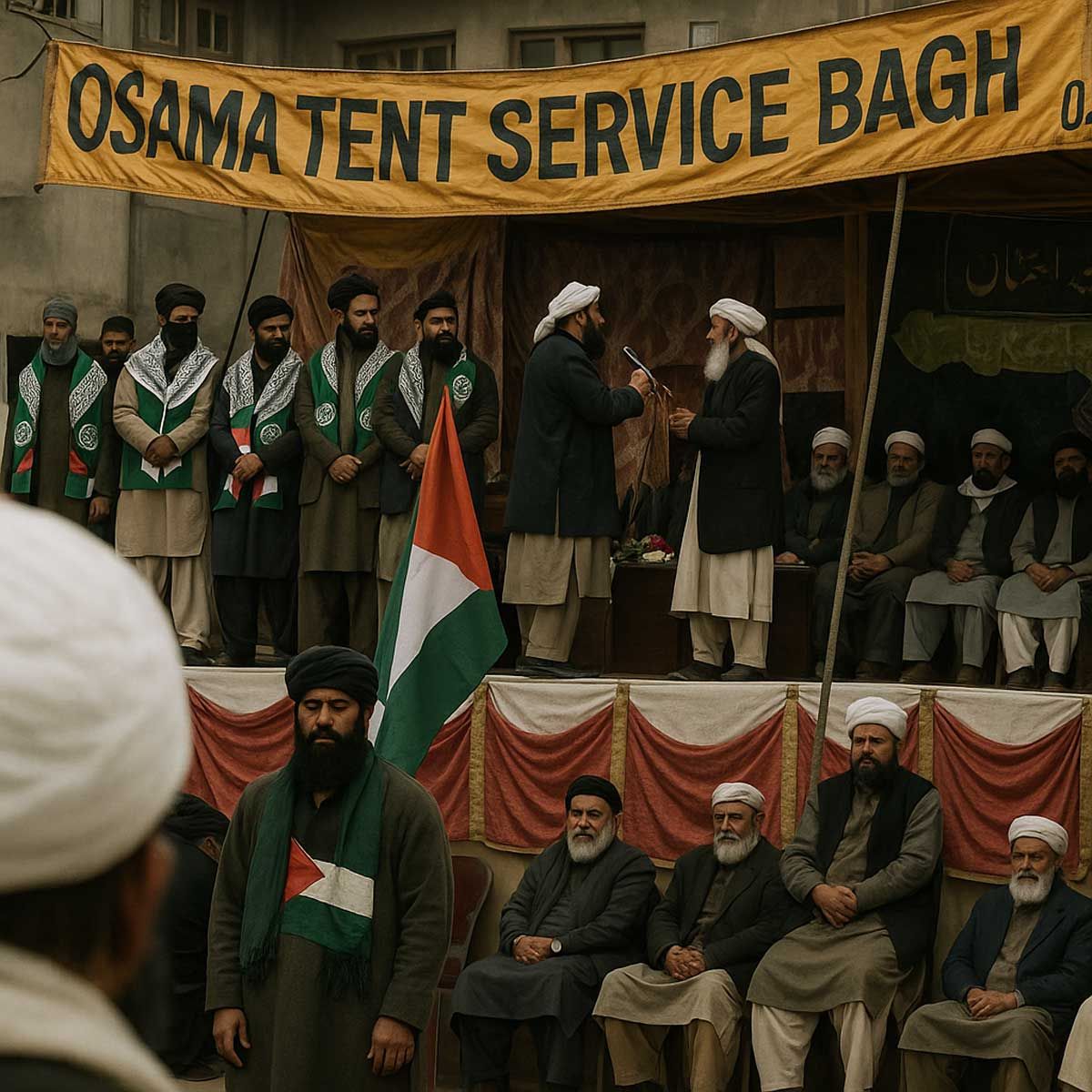Sanatan Articles
Satyaagrah
Written on
Satyaagrah
Written on
Satyaagrah
Written on
Satyaagrah
Written on
Satyaagrah
Written on
JOIN SATYAAGRAH SOCIAL MEDIA
"यत्र नारी पूज्यंते": Rahul Gandhi might reconsider his views if he examined history; Lakshmibai Kelkar's 1936 founding of the Rashtra Sevika Samiti robustly championed women's empowerment and national pride, starkly contrasting his claims about the RSS

During a recent election campaign event in Mangolpuri, Delhi, Congress leader Rahul Gandhi expressed his views on the inclusion of women in the Rashtriya Swayamsevak Sangh (RSS). He stated, "RSS does not include women; it is ingrained in their thinking that women should be kept as second-class citizens."
Contrary to Rahul Gandhi's assertions, critics and members of the Sangh Parivar argue that he is misinformed about the role of women within their organization. Following Gandhi's remarks, several tweets and statements from Sangh Parivar affiliates highlighted the presence of women-oriented wings within the RSS framework. One tweet, in particular, corrected Gandhi’s oversight by stating, "Rahul Gandhi claims that he is a national leader but doesn’t know basic facts about संघ_परिवार or #RSS. He in his tweet claims that there is no place for women in RSS, but he forgets that there is Sevika Samiti, Durga Vahini also there in Sangh parivaar who works purely among women…"
For those unfamiliar with the structure of the Sangh Parivar, the existence of the Rashtra Sevika Samiti may come as a surprise. This organization, boldly and fearlessly led by women, was established in 1936 by Lakshmibai Kelkar, affectionately known as ‘Mausi Ji’. Since its inception, the Rashtra Sevika Samiti has operated alongside the Rashtriya Swayamsewak Sangh, contributing significantly to what they describe as the pursuit of "Param Vaibhav of Bharat."
Let’s delve deeper into the life and legacy of Lakshmibai Kelkar, or ‘Mausi Ji’. As the founding force behind the Rashtra Sevika Samiti, her story is not just about leadership but also about challenging societal norms and empowering women within a predominantly male-oriented socio-political landscape.
|
Lakshmibai Kelkar: A Beacon of Courage and Commitment
Lakshmibai Kelkar, known for her pivotal role in founding the Rashtra Sevika Samiti, was born in the Nagpur district of Maharashtra on Ashadh, Shukla Paksha, Dashmi, 1962, Vikram Samvat according to the Hindu Panchang, which corresponds to July 1905 in the Gregorian calendar. Originally named Kamal, which means lotus, she was the daughter of Bhaskar Rao Datey, a government servant, and Yashodabai, a homemaker.
During the British rule, engaging with nationalist sentiments was often seen as a subversive act, especially for government employees. However, Lakshmibai’s mother, Yashodabai, defied these norms by purchasing and reading the 'Kesari,' a newspaper edited by the freedom fighter Lokmanya Tilak. She would gather all the women and girls in the neighborhood for group readings. This act of quiet rebellion was crucial in shaping Lakshmibai's patriotic fervor, organizational skills, fearlessness, and indomitable spirit—traits instilled by her parents. From a young age, Lakshmibai was influenced by the songs, traditions, and stories of Hindu legends, fostering a deep connection with her cultural roots and a love for temple visits. Her leadership abilities were evident even in childhood, as she often mediated in playtime disputes, ensuring fairness and justice among her peers.
Cow Protection Campaign and Plague Control in Early Years
Lakshmibai’s early years were marked by active participation in social causes such as the cow protection campaign, where she joined the local temple priest and her nanny in efforts to prevent the slaughter of cows. This campaign not only reinforced her skills in public speaking and humility but also taught her to handle adversity and criticism gracefully when advocating for a noble cause.
The outbreak of plague brought further challenges, yet Lakshmibai, alongside her parents and nanny, dedicated herself to the care of the afflicted, serving all without discrimination based on caste or creed. Her father's commitment was particularly notable; he performed the last rites for many victims who were shunned by others due to fear of contagion. These experiences deeply ingrained the values of endurance, patience, and community service in Lakshmibai.
Following tradition, Lakshmibai married Purushottam Rao, a prominent advocate from the esteemed Kelkar family of Wardha. Post-marriage, her name was changed to Lakshmi, but her commitment to social work did not waver. Her marriage marked a new chapter where she continued to impact her community positively, upholding the values she had learned from her youth.
|
Wardha: The Center of Activity
Following the passing of Lokmanya Tilak, a key figure in the Indian freedom movement, Mahatma Gandhi relocated from Sabarmati to Wardha, choosing it as the new site for his ashram, Sevagram. This small town soon became a hive of political activity, drawing freedom fighters from across the nation. During this tumultuous period, Lakshmibai Kelkar's patriotic spirit was rekindled. She became a source of inspiration to her sisters-in-law and other family members, urging them to contribute to the freedom struggle. Their dedication was such that they even donated their jewelry to support the cause. Tragically, around this time, Lakshmibai faced personal hardships: her husband succumbed to tuberculosis, a deadly and untreatable disease at the time, and she was left a widow at just twenty-seven. Her elder daughter also fell victim to the same illness.
Beginning of Active and Formal Socio-Political Life
In the face of these personal losses, Lakshmibai recognized a significant gap in the educational opportunities available to girls in Wardha. Determined to make a change, she founded the Kesarimal Kanya Vidyalaya, a school for girls that not only focused on academics but also emphasized physical activities like cycling and swimming. Lakshmibai’s efforts didn’t stop at education. She personally searched for compassionate and dedicated teachers, providing them with accommodation in her own home and treating them as part of her family. Her involvement extended to participating in spinning programs, morning marches (Prabhat Pheris), and evening prayer meetings at Sevagram, contributing to a holistic educational environment. The school she started remains operational to this day, a testament to her enduring impact on women's education in Wardha.
Recognizing the broader challenges faced by women in society, Lakshmibai began seeking solutions to empower them. During this time, her sons joined the Rashtriya Swayamsevak Sangh (RSS), where they received training in physical and mental discipline and the art of warfare. Observing the positive changes and discipline in her sons, Lakshmibai saw the potential for a similar organization for women. Motivated by this vision, she approached Dr. K.B. Hedgewar, the founder of the RSS. Dr. Hedgewar was impressed by her quiet strength and philosophical depth. Drawing on the examples of great leaders like Swami Vivekanand, Lakshmibai argued convincingly for the need to empower women. Moved by her dedication and resolve, Dr. Hedgewar supported her initiative, advising and inspiring her as she took on the responsibility of leading what would soon become the Rashtra Sevika Samiti. This marked a significant milestone in her journey towards fostering a space where women could thrive on par with their male counterparts in the sphere of nationalistic endeavors.
Seeding of Confidence and Providing the Platforms
Recognizing the undermining impact of foreign rule on the confidence and nationalistic pride of Indian women, Lakshmibai Kelkar set about rectifying this. She believed fervently that the first step towards the betterment of women was to "inspire women about the glorious past of India and pride for nationalistic values," as many felt their own values and ideals were inferior to Western ideologies. With a dedicated team, Lakshmibai went door to door, encouraging women to step out of their homes and engage in national service. This outreach culminated on Vijayadashmi day, when the Rashtra Sevika Samiti was formally inaugurated. Bolstered by her infectious enthusiasm, women began enrolling themselves in the Samiti, gaining newfound courage and confidence. They affectionately began referring to her as ‘Vandaneeya Mausiji’ and looked up to her as a role model, confidante, and guide. Under her leadership, the Sevikas engaged in physical and outdoor exercises, strengthening both body and spirit. Lakshmibai didn’t stop there; she opened new centers or Shakhas across various locations and held camps to inspire and induct new members.
|
Deep Sense of Duty
Lakshmibai was not only a leader in the public sphere but also a dedicated family woman. She managed to maintain a unique balance between her family responsibilities and her social work. There were times when her presence was urgently needed at home, especially during the illness of her children, yet she managed to keep her social initiatives running smoothly. She possessed extraordinary skills in managing both her home and her social life without letting one negatively affect the other. Initially, she focused on inspiring women and setting up training camps. Once these camps were established, she laid the groundwork for the second stage of her plan, which included proposals for setting up nursery schools and small-scale industries. However, the partition of India demanded her attention shift to more urgent issues. Demonstrating immense bravery, she traveled up to Sindh to provide moral, spiritual, and physical support to the Hindus there amidst the turmoil of partition. In Karachi, she witnessed the communal hatred and violence firsthand. Despite the dangers, she exhorted the Sevikas there to remain united and calm and ensured their safe boarding and lodging in Bombay.
Inspired Zeal
During a particularly reflective period in her life, Lakshmibai Kelkar experienced a profound dream that would further shape her mission. In this dream, she was given a copy of the Ramayana by a holy sage, who urged her to "work for peace and harmony." Waking with a sense of elation, Lakshmibai decided to imbue the Rashtra Sevika Samiti with a new direction focused on discourses of the Ramayana. Her passionate and heartfelt narrations not only clarified the text’s lessons but also made her a revered figure among listeners. Lakshmibai traveled extensively across numerous states, sharing her insights and captivating audiences with her powerful oratory skills.
She chose to focus her narrations on the events leading up to the coronation of Lord Ram, emphasizing his qualities as an exemplary administrator and ruler. Her intent was to highlight his ideals of duty and sacrifice as practical virtues that could be emulated in everyday life. Each discourse concluded with the coronation ceremony, a symbolic moment of triumph and moral righteousness. Lakshmibai used these stories to exhort women to emulate Sita, urging them to embody courage, strength, purity, and fearlessness as they fulfilled their duties to family, society, and nation.
Through her books and spoken words, Lakshmibai Kelkar gave direction and purpose to millions. Her teachings not only deepened the understanding of traditional Indian values but also provided practical guidance on how these ancient principles could be integrated into modern life, especially for women striving to make a difference in a rapidly changing world.
Later Works
In her later years, Lakshmibai Kelkar, affectionately known as Mausiji, continued to innovate and expand the reach and depth of the Rashtra Sevika Samiti. Understanding the unique health needs of women, she consulted various health practitioners and doctors to redesign the fitness program of the Samiti. The revised program incorporated Yogasanas, Suryanamaskar and also included sessions where inspiring stories of great women in history were compiled and shared during prayer meetings. Her commitment to the physical and mental development of women was further demonstrated by inviting several eminent personalities and doctors to provide expert guidance and training to the Sevikas.
Mausiji’s efforts to educate and empower women also extended into the realm of publishing. She initiated the publication of a journal titled ‘Sevika’ in Marathi, which has since expanded and is now published in many languages as ‘Rashtra Sevika’. Furthermore, she established the Grihini Vidyalaya, offering vocational courses, training programs, and short-term courses designed to develop the natural talents of women. Additionally, the Bharatiya Shrividya Niketan was founded to reorganize women's education based on the principles of India’s glorious culture.
One of her notable cultural contributions was the custom of worshipping Goddess Shakti, depicted with eight arms, each holding symbolic items such as a lotus, the Bhagavad Gita, a saffron flag, Agni Kund, bell, sword, and beads. These items represented the power of women, and she had idols installed in various Kendras to underscore this message. Mausiji also formed Bhajan Mandals to foster the musical and devotional talents of women, encouraging them to compose and recite achievements of historic figures like Rani Lakshmibai and Jijamata in poetic form.
Her dedication to cultural education was further highlighted through exhibitions on inspiring subjects such as Shivaji’s struggle, Swami Vivekananda’s clarion call, and she invited artists to contribute to the social renaissance and upliftment of the masses through their artwork. Celebrating the legacies of great women leaders, she initiated the tradition of honoring the Motherland by rendering "Vande Mataram" at every meeting.
Mausiji's architectural contributions include the construction of the Devi Ahalya Mandir in Nagpur, the Ashtabhuja temple in Wardha, and many other temples. These structures not only serve as places of worship but also as centers for community gathering and cultural enrichment, embodying her vision of a society where women are empowered through education, health, and cultural pride.
Her Qualities
Mausiji managed to uphold an exemplary standard of personal conduct alongside her extensive and varied responsibilities. Despite her heavy schedule, she remained a paragon of cleanliness and never let her household duties falter. Her devotion was evident not only in her organizational commitments but also in her personal practices, such as the meticulous care she took in arranging flowers for poojas. Her spiritual life was rich; she often went on pilgrimages, reflecting her deep faith and dedication to her religious practices.
Mausiji was highly conscientious about the value of time, a quality that was essential given the numerous tasks she undertook daily. She was known for her humility, always diverting praise she received to the Samithi, thereby discouraging any form of sycophancy among her followers. Her memory was exceptionally sharp; she could recall a person's details even if she had met them just once. This ability made each member of the Samithi feel recognized and valued, fostering a deep sense of community and personal connection.
Above all, Mausiji's approach to leadership was maternal and nurturing. She cared for each member of the Samithi with such depth that they felt fortunate to be considered her children. This profound bond not only strengthened the cohesion within the Samithi but also inspired immense loyalty and dedication among the Sevikas. Her qualities of leadership, her dedication to service, and her personal virtues made her a revered figure, remembered fondly by all who had the privilege to know and work with her.
Illness and Subsequent Death
As the years progressed, Mausiji planned to expand her efforts into rural and tribal rehabilitation among a host of other activities. She continued her passionate discourses and inspired the Sevikas with vigor until a pivotal moment in August 1978, when she suffered a heart attack and was urgently rushed to the ICU. Her condition initially showed signs of improvement, and this prompted thousands of followers from across India to flock to the hospital in Nagpur, eager to see their beloved leader.
Despite the language barriers with Sevikas who hailed from various states, the deep bond of love and respect they shared with Mausiji transcended the need for words. Their silent, heartfelt support was a testament to the profound impact she had made on their lives. However, her health took another turn for the worse when she suffered a second heart attack. Although there were fleeting signs of recovery, she ultimately succumbed to her ailments on Kartik (Margshirsh) Krishna Paksha Dwadashi 2035 Vikram Samvat (27th November 1978). In a solemn procession to the Ambazari ghat, her body was briefly laid in Shree Shakti Peeth, a place that has since been transformed into her memorial.
Legacy of Vandaneeya Mausiji
The life story of Vandaneeya Mausiji stands as a beacon of courage and determination. In a society predominantly governed by male influence, her moral courage, mental fortitude, and visionary leadership led to the creation of a significant organization aimed at the empowerment and rehabilitation of women. She ignited the patriotic spirit and awakened the dormant feminine power within countless traditional Indian women. Mausiji tirelessly advocated for the Hindu philosophy of ‘Vasudaivaka Kutumbakam’—meaning ‘the world is one family’. She dedicated her entire life to the service of the motherland, always emphasizing the importance of nurturing motherhood instincts to serve all members of society comprehensively.
Mausiji believed that true service, imbued with a spirit of duty, love, and sacrifice, was the hallmark of a great nation. She endeavored to instill pride in the glory of ancient Hindu culture in the hearts of women, ensuring that her teachings and spirit would resonate with Indian women for generations to come. Her enduring legacy continues to inspire those who seek to make meaningful contributions to their communities and uphold the values she cherished and propagated throughout her life.
 |
 Support Us
Support Us
Satyagraha was born from the heart of our land, with an undying aim to unveil the true essence of Bharat. It seeks to illuminate the hidden tales of our valiant freedom fighters and the rich chronicles that haven't yet sung their complete melody in the mainstream.
While platforms like NDTV and 'The Wire' effortlessly garner funds under the banner of safeguarding democracy, we at Satyagraha walk a different path. Our strength and resonance come from you. In this journey to weave a stronger Bharat, every little contribution amplifies our voice. Let's come together, contribute as you can, and champion the true spirit of our nation.
 |  |  |
| ICICI Bank of Satyaagrah | Razorpay Bank of Satyaagrah | PayPal Bank of Satyaagrah - For International Payments |
If all above doesn't work, then try the LINK below:
Please share the article on other platforms
DISCLAIMER: The author is solely responsible for the views expressed in this article. The author carries the responsibility for citing and/or licensing of images utilized within the text. The website also frequently uses non-commercial images for representational purposes only in line with the article. We are not responsible for the authenticity of such images. If some images have a copyright issue, we request the person/entity to contact us at This email address is being protected from spambots. You need JavaScript enabled to view it. and we will take the necessary actions to resolve the issue.
Related Articles
- "सनातन": In Tamil Nadu's fields, archaeologists uncover a 500-year-old Vijayanagara hero stone, depicting a valiant warrior in battle, echoing the rich legacy of an empire that profoundly sculpted the cultural and historical tapestry of Southern India
- "Razakar Era: When Innocence was Lost Forever": Unveiling a dark tale of Hyderabad history, the upcoming film "Razakar" sheds light on the hardships endured by Hindus under the Nizam rule before the heroic intervention of Indian forces in Operation Polo
- Jauhar of Rani Padmini and the enduring Muslims legacy of enacting necrophilia act of gang raping dead bodies
- ‘The Koh-i- Noor’ or “Two and half days’ food of the entire world” as valued by Mughal Emperor Zahiruddin Muhammad Babur is one Gem in a history that is not known to have ever been bought or sold, it always changed hands as a result of conquest
- "भूले तो नहीं": In 1860, the ship Truro & Belvedere brought 680 Indian indentured laborers to South Africa, beginning a journey of hardship that has since evolved into a thriving Indian community deeply embedded in South Africa's culture and history today
- Why look for Shivling in every mosque: RSS chief Mohan Bhagwat on Gyanvapi says 'it is a matter of faith for Hindus, issue should be settled amicably', but advises against opening battles in every mosque
- Tirot Singh: An Unsung Hero of the Khasi Tribe who destroyed British with his skill at Guerrilla Warfare
- "Uncover a hidden aspect of history": The mystery surrounding King Vikramaditya's reign and his illustrious Navaratnas, journey through time, exploring the legends of Kalidasa to Vetala Bhatta, unraveling a historical enigma from the 1st century BCE
- Lalitadiya Muktapida: A great successor of Karkota Dynasty who defeated Arabs and subjugated Turks
- Gandhi corrupted the original Hindu bhajan ‘Raghupati Raghav Raja Ram’ by including ‘Allah’
- Rare footage of Pakistan Army surrendering to Indian Armed Forces after the humiliating defeat in 1971 war: Vijay Diwas
- Jagannath Temple administration issues clarification on proposed sale of temple lands
- "Tied to the cannon and blown to pieces couldn't deter his loyalty to Ettayapuram King and his devotion to the motherland stood sturdy and unshaken": Veeran Azhagumuthu Kone, Tamil Warrior who rebelled against Britishers 100 years before 1857 war
- “Architecture should speak of its time and place, but yearn for timelessness”: Beautiful Mandore Garden located in the city of Jodhpur, Rajasthan known for its rich history, stunning architecture, and lush greenery, making it a popular tourist destination
- When Nehru ignored warnings from Sardar Patel and Sri Aurobindo and shocked USA President: Chinese Betryal and loss of centuries old ally





















